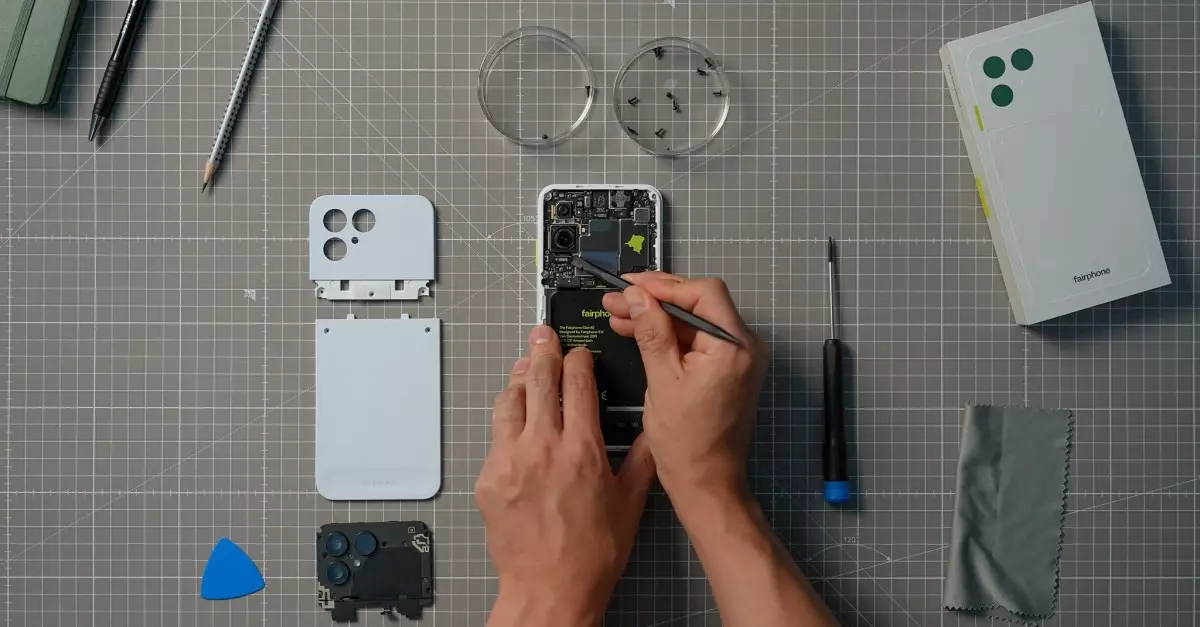The release of the Fairphone 6 marks a pivotal moment in the smartphone industry, emphasizing a radical shift towards sustainability without sacrificing essential repairability. Unlike typical flagship devices, which often prioritize sleekness and miniaturization at the expense of user serviceability, the Fairphone series steadfastly champions a modular, user-centric approach. Its latest iteration continues this legacy, setting an industry standard that many competitors will find hard to match. The fact that Fairphone has repeatedly earned perfect repairability scores from iFixit underscores its unwavering commitment to empowering consumers to extend the lifespan of their devices, reducing electronic waste and promoting environmental responsibility.
This progression isn’t just about offering a sustainable product; it’s about redefining what a modern smartphone can be. In an era where rapid technological obsolescence and disposable culture dominate, the Fairphone 6 boldly asserts that durability, repairability, and ecological values can coexist with technological advancement. By prioritizing these principles, Fairphone challenges the industry narrative that consumer electronics are inherently disposable and calls for a paradigm shift towards conscious consumption.
Design and Repairability: Striking the Balance Between Form and Function
One of the most striking aspects of the Fairphone 6 is its meticulous design that balances a smaller, more streamlined profile with ease of repair. Despite not offering the now-common tool-free battery replacements, the use of only a T5 Torx screwdriver and a modest seven screws to access the battery exemplifies a thoughtful engineering approach. The company justifies the absence of tool-free components by explaining that the screws are necessary for the slimmer soft-pouch battery, which contributes significantly to the device’s compact design. This transparency demonstrates a genuine commitment to rational design choices that prioritize longevity over superficial convenience.
Every component within the Fairphone 6 is designed for ease of replacement—from the USB-C port and camera sensors to the mainboard—making repairs accessible to dedicated users and professionals alike. The sole exception is the mainboard glued in place, a necessary compromise due to design constraints, but even this isn’t a barrier for most repair scenarios. Fairphone’s initiative to supply spare parts and the availability of replacement modules from iFixit encourages a repair culture that extends beyond authorized service centers, fostering responsibility and sustainability within the user community.
Performance Compromises vs. Ethical Gains
While the Fairphone 6 impresses with its repairability and aftermarket support, it clearly departs from flagship standards in several key specifications. Its modest dual rear camera system, powered by a Qualcomm Snapdragon 7S Gen 3 chipset, reflects a prioritization of repairability over raw performance. This trade-off reveals an important philosophical stance: a device built for longevity and ecological sustainability doesn’t need to be the fastest or most feature-rich to be valuable. Instead, it challenges consumers to rethink what they truly need from their smartphones.
The inclusion of a 6.3-inch LTPO OLED display with 10-120Hz refresh rates indicates that the user experience remains compelling despite hardware compromises. Additionally, the IP55 rating, though not the highest on the scale, still provides a degree of protection suited for everyday life. The decision to restrict USB connectivity to USB 2.0 emphasizes that the core focus remains on durability and repairability rather than superficial performance enhancements. The Fairphone 6’s approach reflects a broader industry truth: sustainable products often require a different set of priorities, valuing lifespan and user empowerment over cutting-edge specs.
Long-Term Support as a Selling Point
Perhaps the most compelling argument in favor of the Fairphone 6 is its commitment to long-term software support. Guaranteeing seven years of Android OS updates and eight years of security patches positions the device as a future-proof investment. This level of support is virtually unprecedented in the smartphone industry, where obsolescence is often engineered into the design. Coupled with a five-year warranty and a loyalty program that rewards users for maintaining their devices, Fairphone not only offers a product but advocates for a sustained, responsible relationship between users and technology.
This approach transcends mere marketing; it reflects a core philosophy that electronics should be designed with their entire lifecycle in mind. The company recognizes that environmental impact isn’t solely about manufacturing but also about how long devices remain functional and secure. Fairphone’s stance challenges other manufacturers to reconsider the very fundamentals of product lifecycle management, prompting a future where sustainability and user control are inherent features rather than afterthoughts.
Market Position and Ethical Economics
Despite its admirable qualities, the Fairphone 6 is not without its hurdles. Its pricing—€599 in Europe and $899 in the U.S.—places it at a premium compared to mainstream smartphones. This cost reflects the specialized engineering and the commitment to ethical sourcing and repairability, yet it also raises questions about accessibility for the average consumer. The limited availability, especially in markets like the U.S., where it ships with Murena’s privacy-focused /e/OS, may inhibit broader adoption, despite the appeal for environmentally conscious buyers.
However, the premium price can be justified by the broader implication: investing in a device that prioritizes repairability, long-term support, and reduced environmental impact can ultimately lead to substantial savings and ecological benefits. The Fairphone 6 embodies a shift towards a more ethical economic model, where consumers are encouraged to place value on durability and responsibility rather than fleeting specifications or brand prestige. This paradigm encourages a more thoughtful approach to technology consumption, one that aligns profitability with planetary health.
The Fairphone 6 stands as a testament to what the future of mobile devices could look like—one rooted in sustainability, transparency, and user empowerment. It challenges us to reevaluate our expectations from technology and accept that real innovation often lies in repairability and ethical design rather than purely performance metrics. By holding itself to a higher standard, Fairphone is pioneering a new era where the device’s “lifespan” becomes a measure of true value.

